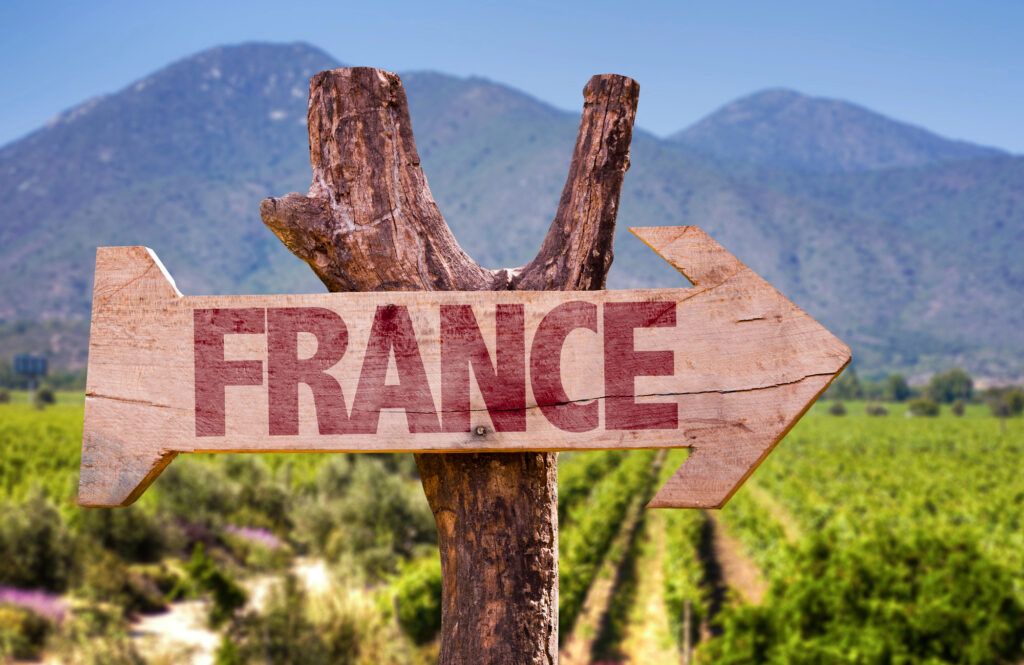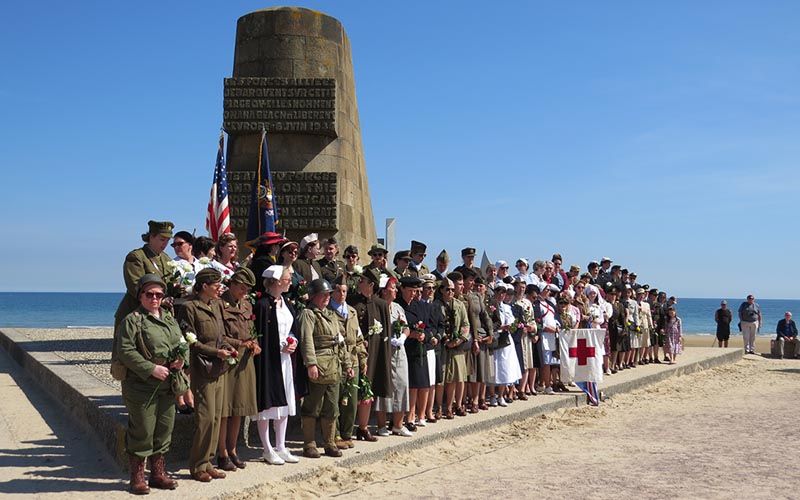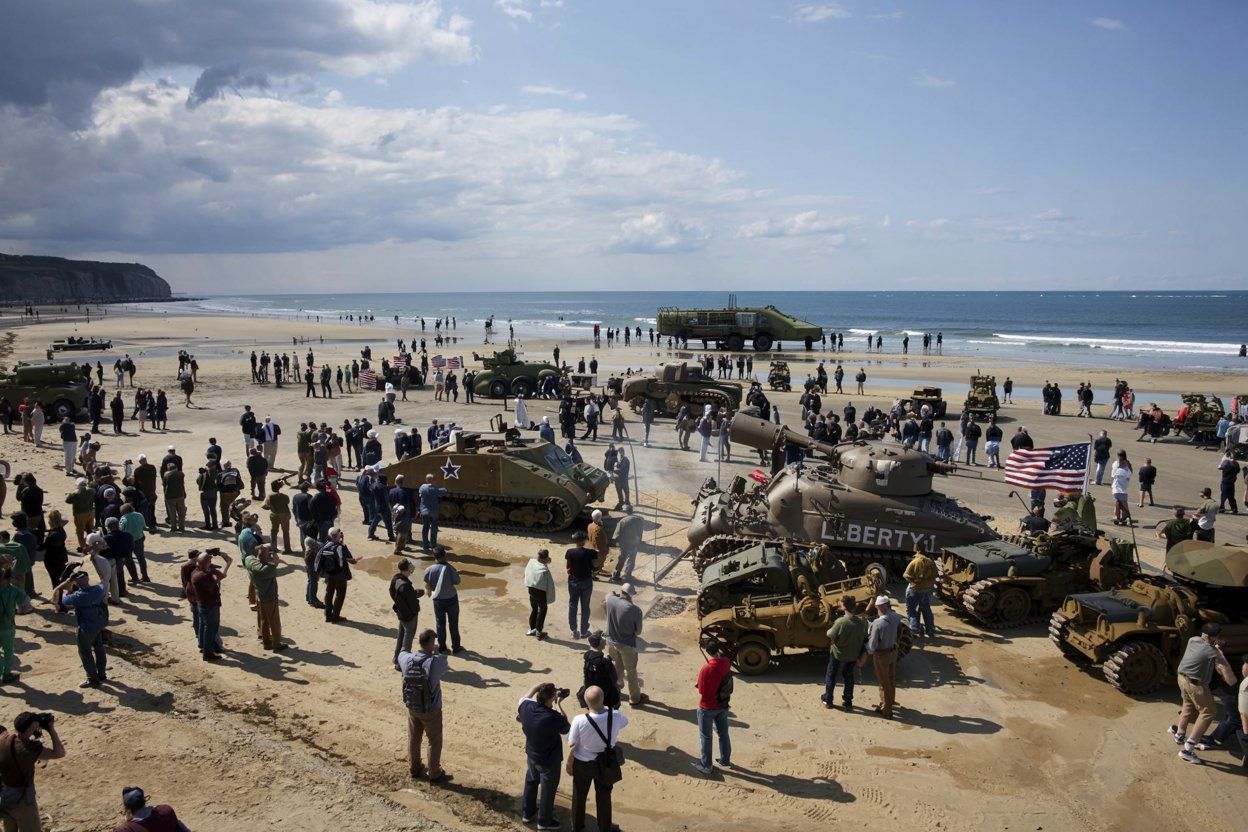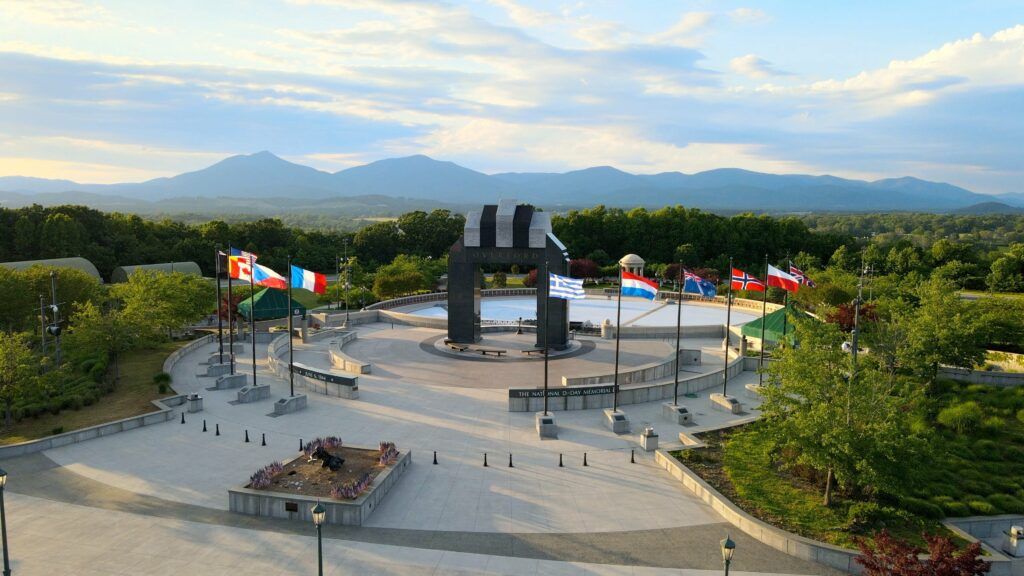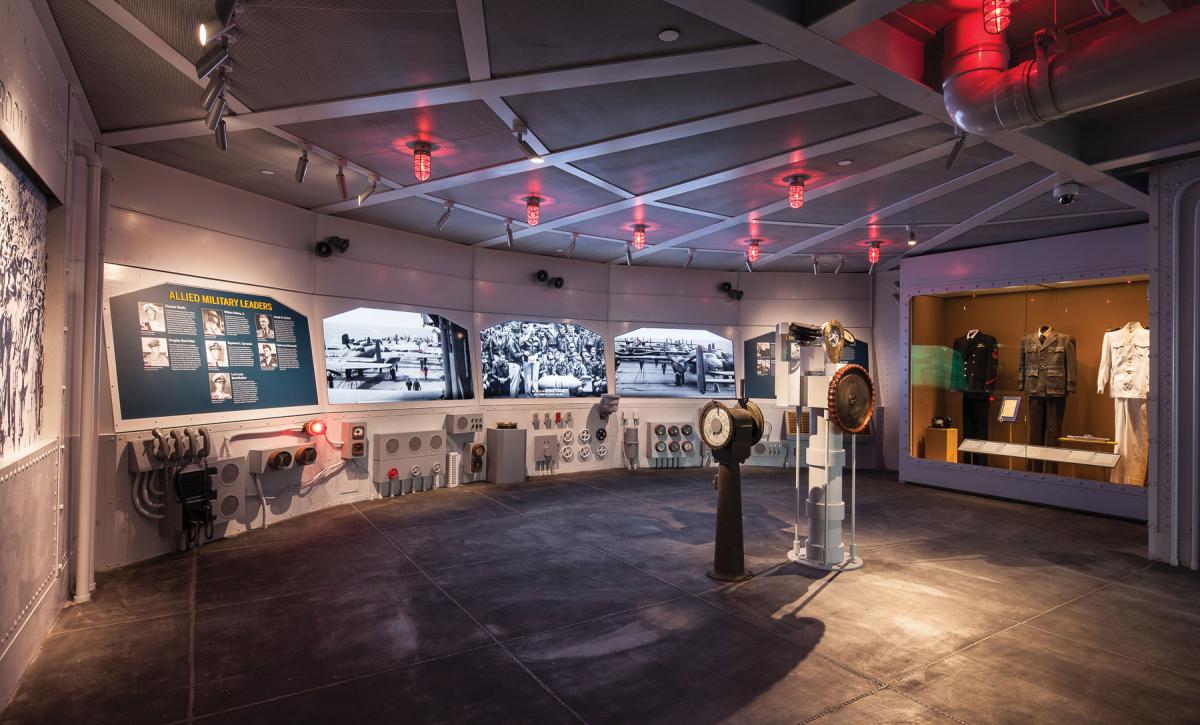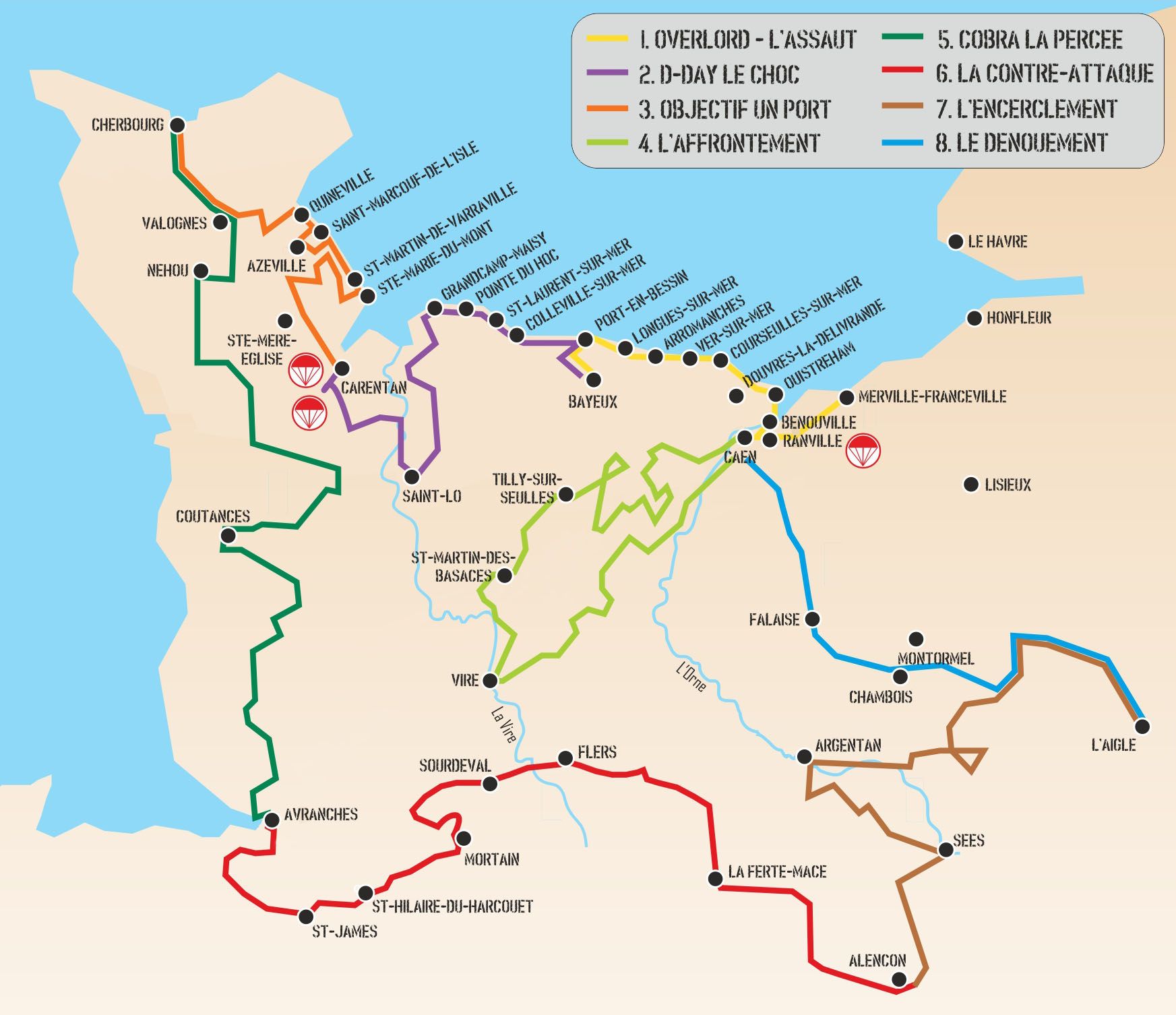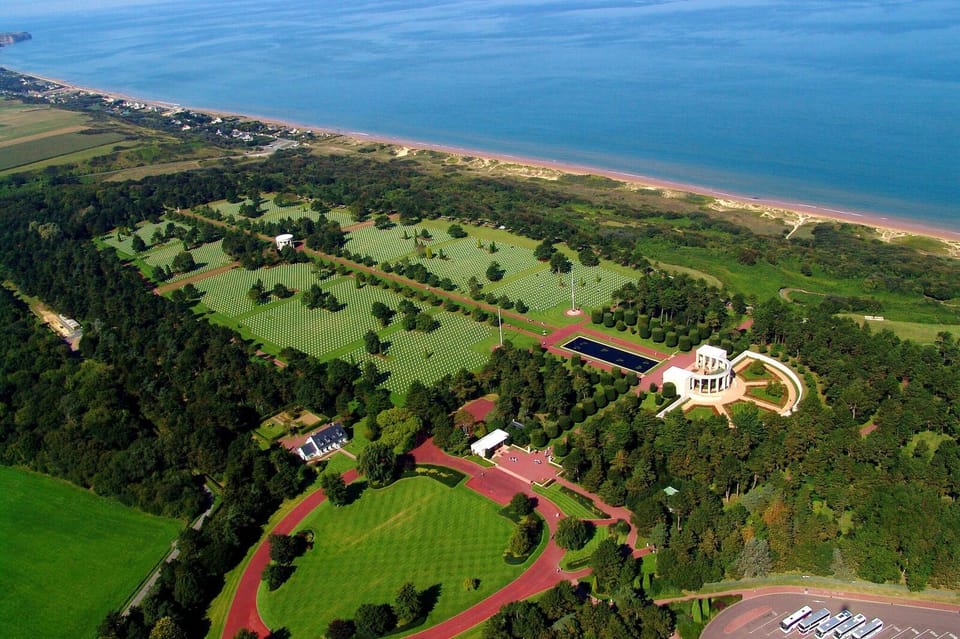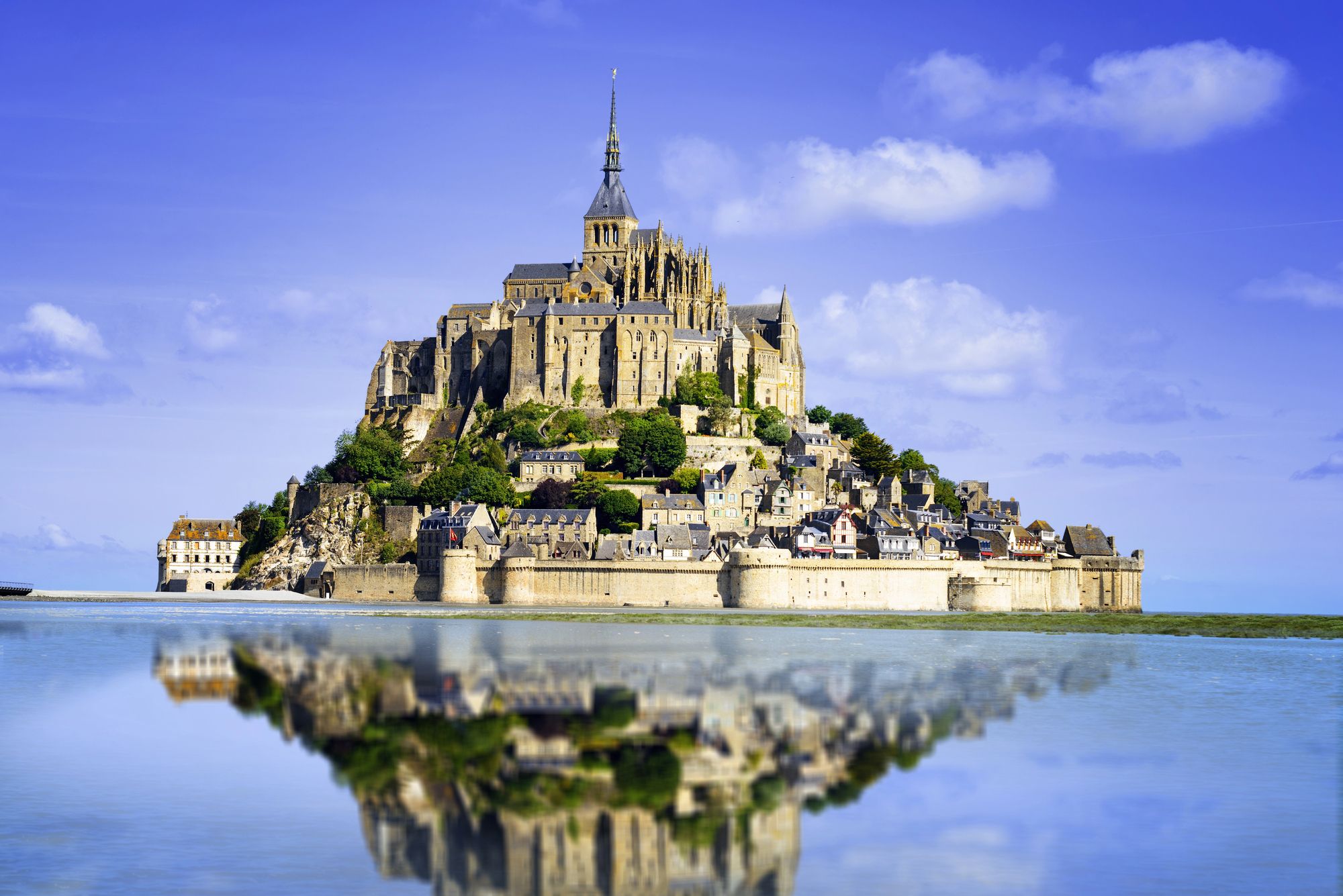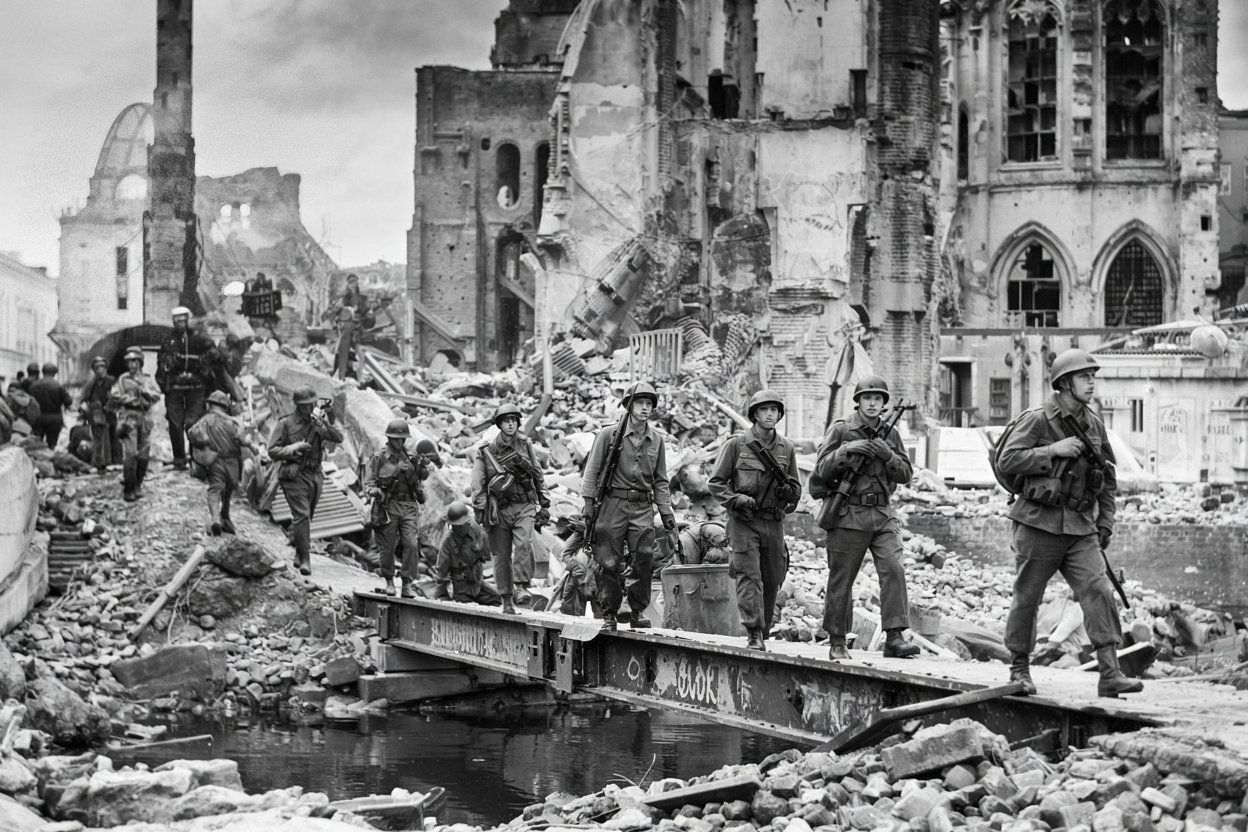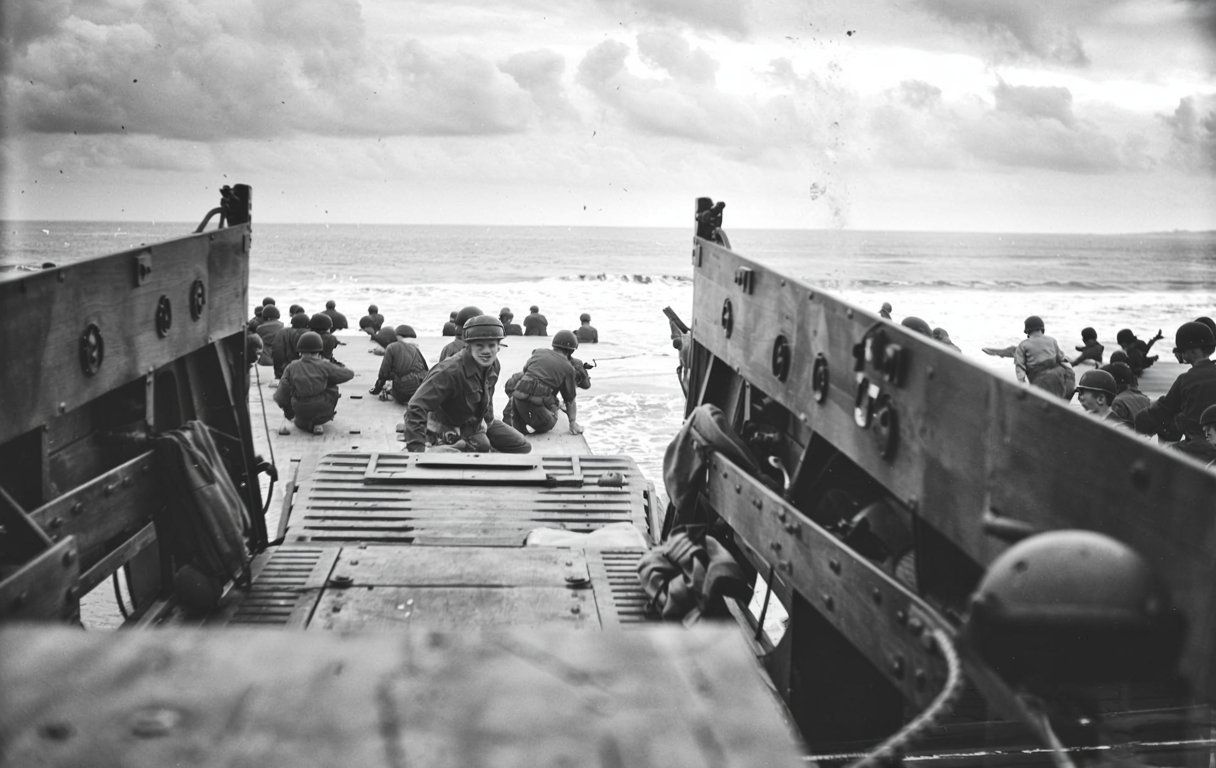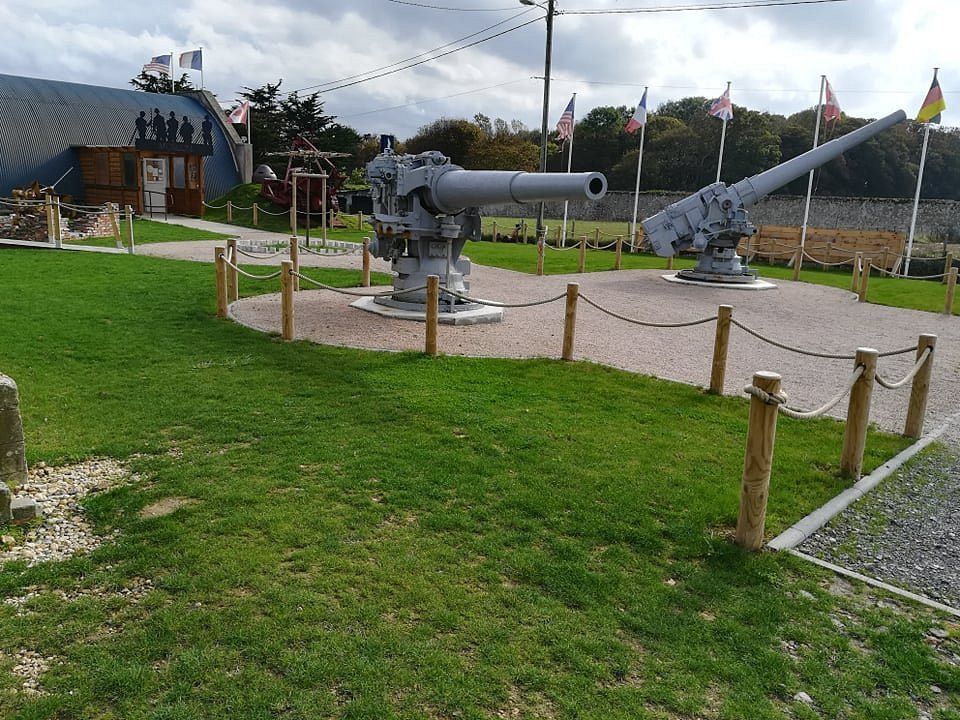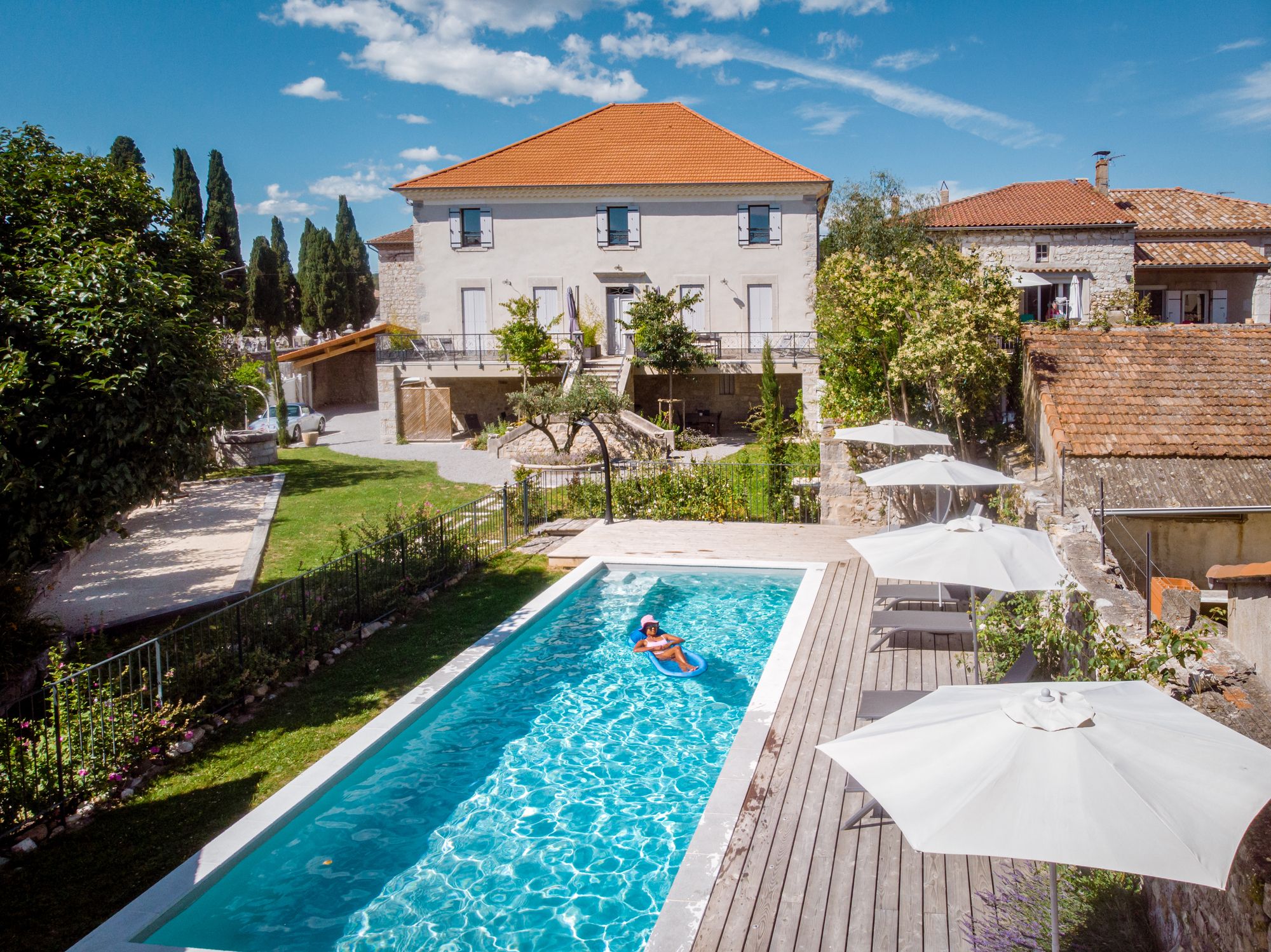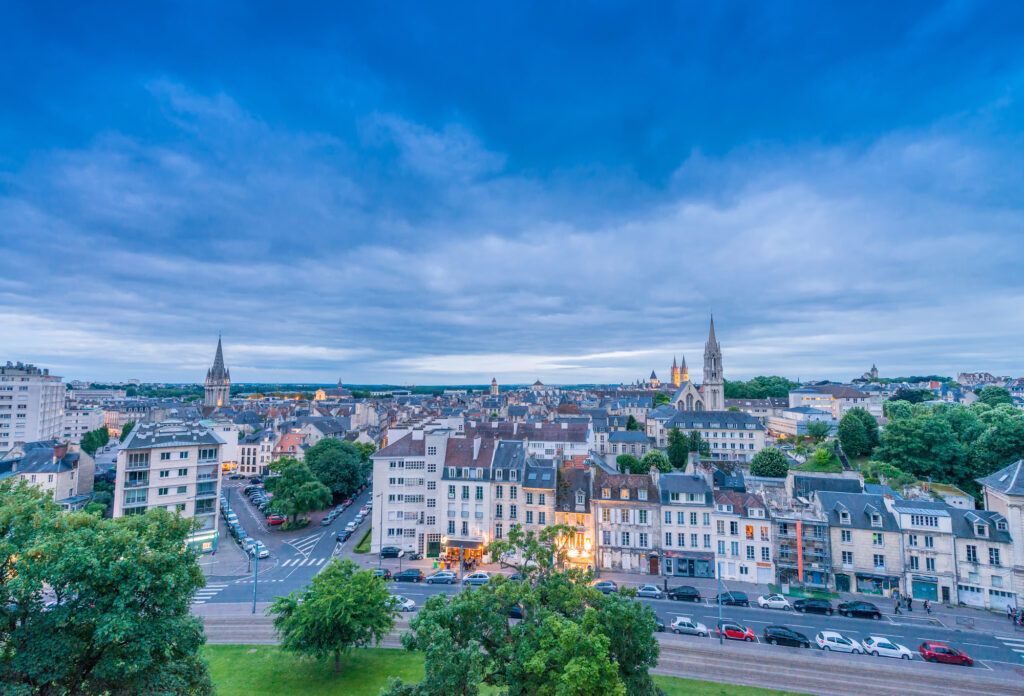Caen’s one of those places where medieval towers and modern life just sort of blend together. You can wander from castle ramparts to peaceful gardens and, before you know it, end up in a buzzing music venue or a centuries-old abbey. The city’s past and present aren’t just side by side—they’re tangled up in ways you’ll notice if you look for them.
This week, the city’s offering up everything from landmark-hopping to lazy river walks and a bit of local flavor in between. If you want a week that mixes history, culture, and the little details of everyday Normandy, this guide should give you a good starting point.
1) Visit Château de Caen, a historic Norman castle
Step inside the Château de Caen, built by William the Conqueror around 1060. The fortress still looms over the city center, its thick stone walls and ramparts impossible to miss. Climb up top for a wide view of Caen’s old town and church spires.
Inside, you’ll find two museums: the Musée de Normandie and the Museum of Fine Arts. Both dive into the region’s history and culture, and you only need one ticket for both, which is handy (Normandy Tourism). Sometimes, the site hosts WWII reenactments and educational events, so don’t be surprised if you bump into someone in period gear explaining wartime life (DDay Center).
Walking the ramparts, you get a feel for the scale and the way this place has anchored Caen for centuries. Something about standing there just makes you think about the layers of history under your feet.
2) Explore the Caen Memorial Museum on WWII history
Head to the Caen Memorial Museum for a deep dive into how World War II shaped Normandy and Europe. Opened in 1988, it sits close to the D-Day landing sites and walks you through the war’s beginnings, battles, and aftermath with clear, chronological exhibits.
You’ll see detailed sections on the D-Day invasion, the Battle of Normandy, and even the Cold War period. The museum balances military history with civilian stories, showing how war filtered into everyday life in occupied France.
Explore a preserved German bunker and watch a short documentary about the Allied operations around Caen. Original photos, artifacts, and maps help you picture the events—without drowning you in technical jargon.
Just outside the galleries, memorial gardens offer a spot to reflect. Honestly, you’ll want at least half a day to take it all in. The place leaves you thinking about how the war’s legacy still sits heavy in Normandy (Mémorial de Caen).
3) Stroll through the Botanical Garden of Caen
Take a breather at the Jardin des Plantes, Caen’s botanical garden. It’s not huge—about 3.5 hectares—but it packs in over 8,000 plant species from Normandy and beyond. The place has been around since 1689, making it one of France’s oldest public gardens.
Wander the shady paths past medicinal plants, greenhouses, and seasonal beds. The garden’s easy to cover in under an hour, but if you want to linger, there are benches everywhere. Families stop by the play areas; locals picnic on the lawns.
Sometimes, you’ll catch a guided tour or a workshop explaining the garden’s research and conservation work. Details are on the Caen Botanical Garden page or Caen la mer Tourism.
It’s not a blockbuster attraction, but with its calm vibe and central spot, it’s perfect for a quick reset between busier stops.
4) Discover the Abbaye aux Hommes and its architecture
The Abbaye aux Hommes—or Abbey of Saint-Étienne—stands as one of Caen’s most impressive landmarks. William the Conqueror founded it in 1063, and he’s actually buried here. The abbey shows off the shift from Romanesque to early Gothic architecture, with thick walls, rounded arches, and a tall, light-filled nave built from pale Caen stone.
You can check out the cloister and the 18th-century monastic buildings, which now house Caen’s Town Hall. The courtyard and wood-paneled rooms hint at how the place shifted from a religious hub to a civic one. If you’re curious about the hidden corners, guided tours unlock some of the restricted spaces.
For anyone into medieval architecture or Norman history, Abbaye aux Hommes feels like a must. There’s something about the clarity of the design and the weight of history here that just sticks with you.
5) Attend a concert at the Vox Theater
Catch some live music at the Vox Theater, a small venue smack in the city center. It’s known for its varied lineup—local bands, touring acts, and a mix of styles. You don’t need to trek far to find a good show.
Check the Info Concert listings for Caen to see what’s on this week. Rock, pop, jazz, and indie shows pop up regularly. Tickets tend to be affordable, and booking ahead online saves you from standing in line.
The venue’s intimate setup means you’re always close to the stage. Seating’s limited, so arriving early helps if you want a good spot. There’s a bar, but don’t expect a huge drinks menu.
If you want to compare options, Bandsintown and Songkick list other shows around Caen. Still, Vox Theater is a reliable bet if you just want a straightforward, atmospheric night out.
6) Browse local products at the Saint-Pierre Market
Dive into Caen’s daily life at the Saint-Pierre Market, held along the port and the bassin Saint-Pierre. It’s big—over 400 traders selling produce, seafood, meat, and seasonal goods. If you’re curious about local shopping and eating habits, this is the place.
Go early on Sunday morning for the best picks and fewer crowds. The market runs from Place Courtonne to Quai Vendeuvre, so you can wander at your own pace. Local cheeses, cider, and baked treats give you a real taste of Normandy.
It gets busy and loud as the morning rolls on, so if you’re after a quieter vibe, show up right after opening. For more details, check Caen la mer Tourism or Hotel Le Moderne.
7) Walk along the Orne River banks
Start a walk near Caen’s marina, following the paved path along the Orne River as it winds south through quieter neighborhoods. It’s a simple way to get away from the city’s noise without actually leaving town.
Keep going, and you’ll hit wide meadows and wetlands near Fleury-sur-Orne. The Orne banks nature path stretches about 4 km through a protected area; if you’re lucky, you might spot roe deer.
If you’re up for more distance, the greenway toward Grimbosq runs about 19 km south—cyclists love it, and you can rent a bike if you’re feeling ambitious.
Along the way, you’ll see old industrial wharves, restored bridges, and little slices of Caen’s history. It’s a walk that mixes nature with glimpses of the city’s past and present.
8) Tour the Museum of Fine Arts of Caen
Step into the Museum of Fine Arts of Caen, tucked inside the Château de Caen’s old walls. The museum’s got a relaxed atmosphere, with European art from the 16th to the 21st centuries displayed in a way that’s easy to navigate.
You’ll see works by Rubens, Delacroix, Monet, and regional Normandy artists. The collection mixes familiar names with lesser-known pieces, so there’s always something to catch your eye. Exhibits rotate sometimes, so even repeat visitors find new surprises.
Outside, the sculpture park and castle grounds give you a break between galleries. There’s a quiet restaurant, Le Mancel, and a small library for art lovers.
It’s not the flashiest museum, but if you want a solid overview of French and European art in a historic setting, it’s a satisfying stop.
9) Relax in the Jardin des Plantes park
Take another breather at the Jardin des Plantes, smack in the center of Caen. The garden’s been around since the 18th century and now serves as both a research spot and a public park. You won’t need much time to see it, but it’s easy to linger.
Thousands of plant species fill the beds, including some rare varieties in tropical greenhouses. Labeled sections help you learn about local and exotic flora. Families come for the walks and picnics—the shaded seats and open lawns make it a favorite.
Entry’s free, and the park’s earned the “Jardin Remarquable” label for its botanical value (Caen la mer Tourism). The garden also runs programs on sustainable gardening and environmental education.
Weekdays are quieter than weekends. The calm here is a nice contrast to Caen’s busier spots. For more, see the Jardin des Plantes Caen overview.
10) Visit the Abbaye aux Dames and its gardens
Explore the Abbaye aux Dames, founded around 1060 by Matilda, William the Conqueror’s wife. Nearly a thousand years of Norman history echo here, and Matilda’s tomb still rests in the Romanesque Holy Trinity church.
The 18th-century convent buildings now hold the Normandy Regional Council, but guided tours (in French and English, about an hour) let you see the restored stonework, vaulted halls, and quiet cloisters. You really get a feel for how the abbey changed with the times.
Outside, formal gardens overlook Caen. Stroll tree-lined paths or just take in the city views from the terrace. The gardens’ symmetry feels peaceful compared to the abbey’s heavier stonework.
Entry’s free, and the site’s open year-round. It’s slower-paced than Caen’s other attractions, and honestly, the tranquility and deep history make it a worthwhile stop for anyone even a little curious about Norman heritage.
Essential Tips for Enjoying Caen in October
October in Caen brings cool air, shorter days, and a slower rhythm that suits thoughtful travelers. You’ll need to plan for variable weather, efficient transport, and basic French etiquette to make your visit smooth and respectful.
Weather and Packing Recommendations
In October, Caen tends to hover between 8°C and 15°C (46°F–59°F). You’ll probably run into frequent light showers—nothing too dramatic, but enough to keep you on your toes. Bring a waterproof jacket, comfortable walking shoes, and plenty of layers so you can adjust as the day shifts.
A small umbrella or a rain poncho easily slips into your bag. Toss in gloves and a scarf, too, especially if you’ll be out early or after dark. The coastal wind? It bites a bit more than you’d think, especially if you’re heading to the D-Day beaches.
When it’s wet or chilly, indoor spots like the Caen Memorial Museum or the Abbaye aux Hommes are perfect for warming up. Museums and restaurants don’t really close for the season, so you’re set for exploring, rain or shine.
Transportation and Getting Around
You can walk pretty much everywhere in Caen’s city center—it’s that compact. The Tramway de Caen links up the train station, university, and main shopping areas. Grab tickets from machines at the stations or through a mobile app. Keep some coins on hand; not every kiosk likes foreign cards.
Thinking about a day trip? Regional trains and buses get you to places like Bayeux and the Normandy beaches in less than an hour. Renting a car is handy for rural adventures, but parking downtown can be a headache.
Cycling works well here, too. The Vélolib system has bike rentals and the city’s got proper lanes. If you’re out at dusk, wear something reflective—autumn evenings sneak up fast.
Language and Local Etiquette
French is the norm, but folks in tourism and hospitality usually speak a bit of English. Still, a friendly Bonjour or Bonsoir goes a long way. Always toss in a Merci or S’il vous plaît—it’s just good manners.
Keep your voice down in public; locals appreciate a calm vibe. In churches or memorials, dress modestly and keep things quiet.
Tipping isn’t expected since service is included, but if you liked the service, rounding up by a euro or two is a nice gesture. Shops often close for lunch from 12:30 to 2:00 p.m., which can catch you off guard if you’re not used to it.
Making the Most of Your Week in Caen
If you want to really get a feel for Caen, it helps to plan ahead—think local flavors, relaxed evenings, and a pace that matches Normandy’s own. There’s no need to rush; just find your rhythm and let the city show itself off.
How to Plan Your Itinerary
Mix up your days with history, downtime, and a bit of local culture. The Caen Memorial Museum gives a deep dive into World War II and what came after. The Château de Caen is massive and worth a wander, and the Abbaye aux Hommes—William the Conqueror’s own project—has serious presence.
Try grouping city center sights together to save time. The castle, abbey, and nearby markets all fit into a half-day stroll.
Hop on public transport or rent a bike for anything farther out. Caen’s trams connect the main spots, and those bike lanes actually make cycling easy. Museums usually close by 6 p.m., so check hours ahead and book guided tours early if you want one—Caen Visite is a good bet.
Dining and Culinary Experiences
Normandy’s food scene leans into dairy, seafood, and apples. In Caen, tripes à la mode de Caen is a local classic—slow-cooked in cider—and you’ll find cheeses like Pont-l’Évêque and Camembert de Normandie everywhere.
For lunch, brasseries around Place Saint-Sauveur serve up set menus with whatever’s in season. Dinner usually starts later, closer to 7:30 p.m., so don’t be surprised if things feel quiet before then.
If you want something laid-back, the Vaugueux district is full of cozy bistros and creperies, often with tables outside. For a splurge, book ahead at a fine-dining spot from Tripadvisor’s best places to eat in Caen. And honestly, pairing your meal with local cider or Calvados? That’s just the right way to do it.
Evening Activities and Entertainment
After a day exploring, you might just want to stroll by the Orne River or wander through the Jardin des Plantes. Both spots feel safe and peaceful at night—plenty of lights, not too crowded.
You could check out a show at the Théâtre de Caen; they put on opera and classical concerts, and honestly, the atmosphere’s pretty special. Not in the mood for something formal? Some bars, especially around Rue Écuyère, usually have live jazz or acoustic music. It’s got a good vibe, not too stuffy.
If you’re after a low-key evening, maybe duck into a café for some local cider or a few small plates. There’s always something happening; TryTravel’s guide to Caen nightlife is worth a look for up-to-date events. Getting back to where you’re staying is easy enough—late trams and taxis are around, so you won’t get stranded.

